A glimpse into the world of the Sheiko family
December 12, 2024
By Reut Golinsky
Photo © Reut Golinsky, International Skating Union (ISU)
It's early morning in the sleepy resort town of Eilat. The air is fresh, the Red Sea is serene, and the streets are completely empty. But if you know a secret backdoor and the password, "I came to meet Julia and her students," you'll be granted a glimpse into the hidden life of the Ice Mall before it officially opens hours later. Seeing an ice rink in the middle of a mall is rare enough in Israel - being there at six in the morning makes it all the more extraordinary.
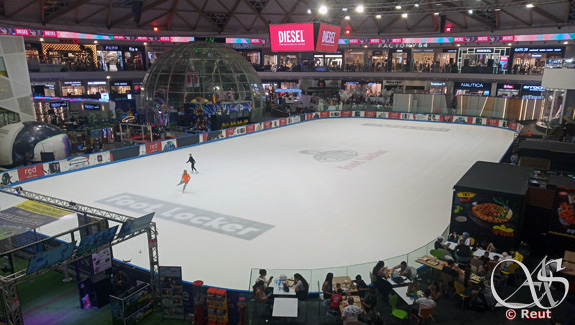
"We worked in Metula - my husband was coaching, and I was skating there until 2005, when I joined him as a coach," Julia Sheiko shares the story of how their school came to be. "When the owner of the Ice Mall was building this place, he started looking for people who could create something unique here. Initially, he just wanted to build a mall, but since there was already another mall in Eilat, he decided to centre this one around a skating rink. While the mall was still under construction, he found us and invited us to move and start working here.
It was an exciting challenge: to build something from scratch. In May 2012, we moved here when our kids were very young - Nikita was four years old and Kirill was only one. At that time, there was nothing around yet, but the rink already existed. 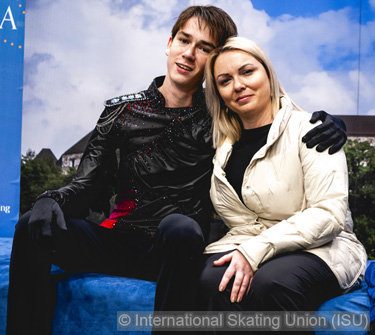 Step by step, we got things going, and by October-November 2012, we opened our school. Of course, it was quite unusual for Eilat to suddenly have a rink and a skating school. At the beginning, when we opened, many people came and brought their kids. Naturally, over time, the initial excitement faded, but the town is small, and there aren't many options for after-school activities. The work was interesting, and we had big ambitions.
Step by step, we got things going, and by October-November 2012, we opened our school. Of course, it was quite unusual for Eilat to suddenly have a rink and a skating school. At the beginning, when we opened, many people came and brought their kids. Naturally, over time, the initial excitement faded, but the town is small, and there aren't many options for after-school activities. The work was interesting, and we had big ambitions.
Nikita was four years old, and we knew that being your own child's coach is not ideal, to say the least. So we tried every other activity we could find here - tennis, judo, piano lessons. Actually, those worked out quite well. But in any case, the kids spent a lot of time at the rink with us. Eventually, Nikita said he wanted to try skating, and we said: 'Okay, go on, try.' While we were busy with other students, he started experimenting on the ice, and step by step, he improved and began to really enjoy it.
At the same time, we had already started taking some of the other kids into higher-level groups, thinking about competitions and introducing them to figure skating as a competitive sport. About six months after our rink opened, another rink opened in Holon (the one where Israeli Nationals are now held - ed) which boosted interest in figure skating across the country. We organised a small competition here in Eilat and invited kids from Holon to participate. These were still very early days - the kids didn't even have actual programs, they were just performing basic elements like swizzles to music. The level was very low, but everyone had a great time, and the event was a success.
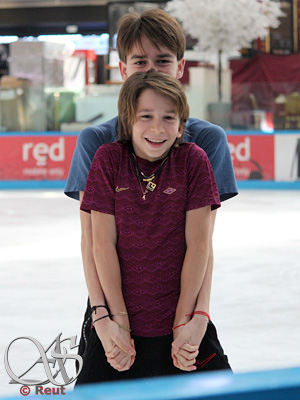 From there, interest started to grow. Some kids wanted to turn skating from an after-school hobby into something more serious, even if they and their parents didn't fully comprehend at the time how much effort and money it requires. Add to that the fact that school attendance is mandatory and non-negotiable, while the main purpose of the rink is public skating sessions, which run from 11 a.m. to midnight. This leaves the only available time for training in the morning before school.
From there, interest started to grow. Some kids wanted to turn skating from an after-school hobby into something more serious, even if they and their parents didn't fully comprehend at the time how much effort and money it requires. Add to that the fact that school attendance is mandatory and non-negotiable, while the main purpose of the rink is public skating sessions, which run from 11 a.m. to midnight. This leaves the only available time for training in the morning before school.
Of course, it was clear that 90% of families would say that coming to the rink at 5 a.m. was too crazy. But there were a few who decided to go for it and agreed to try. It was tough - for them and for us - because we had never worked such early hours before either. But we quickly learned that it's all a matter of habit. We continued - and still continue - with group lessons for basic-level, first- and second-year students during public skating hours. Meanwhile, higher-level students train on private ice in the early mornings.
We usually arrive at 5 a.m., start with a warm-up, and go on the ice at 5:45. Training sessions run until 7:30, after which the kids head to school. Of course, this alone isn't enough for elite-level development, so after school, they usually have another lesson, often during public skating hours. Almost every day, we also do little exhibitions for the public. And then there are the off-ice sessions - choreography, physical training, and so on.
In the meantime, Nikita grew older, and at around seven years old, he started joining us in the 5 a.m. private group. I remember how his teachers reacted when we explained that he also had morning practices before school - they couldn't quite understand it at first. But over time, they saw that he - and later Kirill, too - came to school fully awake, prepared, and ready to learn. The key to making this schedule work is ensuring they go to bed early. Late evening off-ice training isn't an option - everything must be finished by 8 p.m., or even earlier for the younger kids. Without enough rest, it becomes extremely difficult to have productive training the next morning.
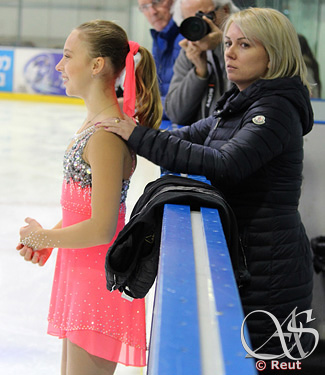 Around 2015-2016, we decided to take our skaters to international competitions, starting with an event in Riga that included categories for all levels, from beginners onward. It was important to expose them to what real competitions look like, what competitive figure skating truly entails, and to give them a glimpse of what's next - something to aspire to.
Around 2015-2016, we decided to take our skaters to international competitions, starting with an event in Riga that included categories for all levels, from beginners onward. It was important to expose them to what real competitions look like, what competitive figure skating truly entails, and to give them a glimpse of what's next - something to aspire to.
From that first generation of our skaters, we had Ivetta Berkovich (who represented Israel at the junior level from 2019 to 2021, competing in various international events, including Junior Grand Prix, as well as the Bavarian Open 2020, Volvo Cup 2019, and others - ed). For various reasons, her competitive career ended earlier than it might have, but she remains in the world of figure skating, now working as a coach during our group lessons. While she may not have fully realised her potential as a competitive skater, the experience gave her something invaluable. She stayed connected to the figure skating world, works well as a coach, and we're hopeful she'll continue contributing to this field.
Yes, we began taking kids to international competitions, but it wasn't simple. Everything was at their own expense, and not everyone could afford it. So, I had another dream: I wanted to host an international competition here in Eilat, where everyone could participate or watch. Of course, it was a big challenge because this rink isn't ideally suited for such events - we don't have stands for spectators, proper dressing rooms, and being a resort town, hotels in Eilat are expensive.
We started small, organising an interclub competition rather than an ISU-sanctioned one. Participants came from seven countries, and everyone had a great time. Building on that success, we eventually held an ISU competition, which attracted even more participants. 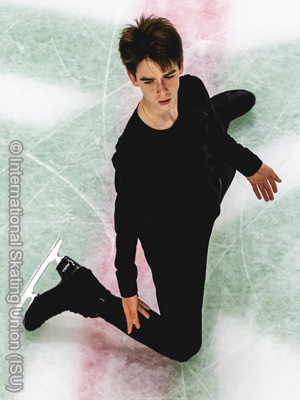 We also combined it with an interclub event for local kids, allowing them to compete and then watch elite international skaters in action. The conditions weren't perfect; for example, we used temporary tents outside the mall as dressing rooms. Still, people truly enjoyed the event. Everyone who came kept asking when the next one would be. Judges, and skaters, all wanted to return because it was a unique opportunity - an additional competition towards the end of the season, held in February, with the bonus of great weather and the Red Sea.
We also combined it with an interclub event for local kids, allowing them to compete and then watch elite international skaters in action. The conditions weren't perfect; for example, we used temporary tents outside the mall as dressing rooms. Still, people truly enjoyed the event. Everyone who came kept asking when the next one would be. Judges, and skaters, all wanted to return because it was a unique opportunity - an additional competition towards the end of the season, held in February, with the bonus of great weather and the Red Sea.
The last Open Ice Mall Cup took place in February 2019, and it was the largest one yet, featuring participants from over 20 countries. My goals and ambitions were realised, but if the opportunity arises to bring this event back, I would be happy to organise it again."
While we chat with Julia in the small storeroom by the rink, Nikita and Kirill are on the ice, warming up for their second session of the morning. Though it's a national holiday, for them, it's just another workday that began at 5 a.m.
By mid-May, when we meet, the Sheiko family has already enjoyed a well-deserved vacation in Italy and is fully immersed in preparations for the new season. The music has been chosen, and the choreography is complete. In a week, their choreographer, Igor Tchiniaev, will arrive to fine-tune the details. Now, the focus is on regaining and pushing their technical level further - whether it's stabilising the triple Axel or attempting to land a quad.
"I need to love the music I skate to," Nikita says as we discuss their new programs. "I need to feel like I have something to express with the music we choose. Last season, I really loved my short program, 'Back from the Edge' - it's still my favourite program ever. But I couldn't really connect to my free skate. This season, though, both programs are going to be really good; I genuinely love them both.
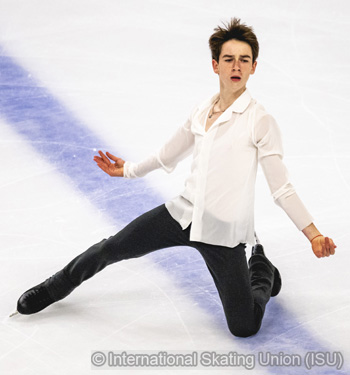 Skating to 'Schindler's List,' especially now, holds great significance for me. Of course, the version you saw in practice still needs a lot of work, but I think it's going to be a very powerful program.
Skating to 'Schindler's List,' especially now, holds great significance for me. Of course, the version you saw in practice still needs a lot of work, but I think it's going to be a very powerful program.
My free skate music is 'Dracula.' I really love this musical. We took three different pieces from it and combined them into one story. I'm portraying Dracula."
"We kept my short program, 'You Are My Destiny' by Paul Anka, from last season," Kirill explains. "And my free skate is to 'I Will Be There' by Brandi Burkhardt and Thomas Borchert, from the musical 'The Count of Monte Cristo.' I loved this music the moment I heard it, so we chose it for my program."
Although both Nikita and Kirill are artistic skaters who appear to connect effortlessly with the audience, they explain that this is the result of daily hard work. It begins with hours on the ice alongside their choreographer - "ten days, five hours a day on the ice" - meticulously crafting and refining every movement and expression. From there, it's about countless repetitions of the program until every detail becomes second nature.
Both take an active role in choreographic choices and decisions, discussing them with their choreographer. "We try different movements and propose our own versions, so there's a part of us in the programs as well." For example, for Nikita, it's the knee slides he worked so hard on, while for Kirill, it's the hydroblading he learned to do, inspired by Yuzuru Hanyu.
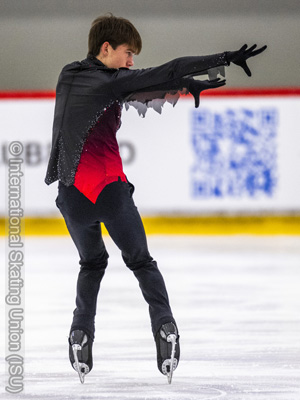 Nikita's biggest achievement to date is his gold medal at the 2023 European Youth Olympic Festival (EYOF) in Friuli-Venezia Giulia, Italy. "It was a big surprise for us, too," he admits. "I think what happened is that everyone else made mistakes, while I did my best. Let's be honest, I can't say I won because I was the strongest skater there - I didn't even have a triple-triple combination back then. But I did my job; I came prepared. Right before that, I competed in the EduSport Trophy in Bucharest, where I achieved my best score at the time, 198.47 points. Our initial expectations were actually lower; we didn't anticipate that in my first junior season I would receive such high component scores or that both the judges and audience would like me. But it just happened that, at the right time, everything - both the technical side and the components - came together."
Nikita's biggest achievement to date is his gold medal at the 2023 European Youth Olympic Festival (EYOF) in Friuli-Venezia Giulia, Italy. "It was a big surprise for us, too," he admits. "I think what happened is that everyone else made mistakes, while I did my best. Let's be honest, I can't say I won because I was the strongest skater there - I didn't even have a triple-triple combination back then. But I did my job; I came prepared. Right before that, I competed in the EduSport Trophy in Bucharest, where I achieved my best score at the time, 198.47 points. Our initial expectations were actually lower; we didn't anticipate that in my first junior season I would receive such high component scores or that both the judges and audience would like me. But it just happened that, at the right time, everything - both the technical side and the components - came together."
The Olympic spirit runs strong in this family, with father and coach Sergei Sheiko having represented Belarus at the Olympic Games in Lillehammer 1994. "Yes, of course, he's told us a lot about the Games. He says it's a once-in-a-lifetime experience and recalls how he also went to see other sports. And really, is there anything cooler than the Olympic Games?! Now, it's our big dream - to qualify for the Games."
"Unfortunately, last season we didn't secure a quota spot for the 2024 Youth Olympic Games in Gangwon," Nikita adds. "I'm not sure whether I'll still be eligible for the next Youth Games due to age restrictions, but we still need to work on the quota for Kirill. He should also have a chance, age-wise, to participate in the European Youth Games."
Adults rarely retain memories from before the age of three or four, so it's no surprise that both Nikita and Kirill, who started skating at a very young age, can't recall life without skates or pinpoint their first figure skating memory. "I was told that the first time I stepped on the ice was when I was three, but I don't remember it," Nikita says. "Even earlier, I was brought to the rink at eight months old, and they let me walk on the ice. So, as far back as I can think, there has always been ice and figure skating - I don't remember myself without it. And it's the same for Kirill."
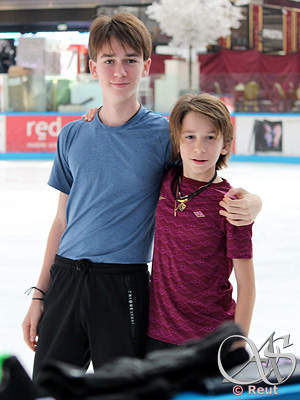 Having a brother to train and compete with is fun, they agree. However, the season 2024/25 marked the first time they actually competed against each other, as Kirill moved up to the junior level. Nikita, with his greater experience, occasionally tries to give his younger brother a pep talk before a competition ("But I don't listen!" Kirill interjects). "Yes, actually, it works better for us if, before the competition starts, each of us is on his own, in a separate room," Nikita admits.
Having a brother to train and compete with is fun, they agree. However, the season 2024/25 marked the first time they actually competed against each other, as Kirill moved up to the junior level. Nikita, with his greater experience, occasionally tries to give his younger brother a pep talk before a competition ("But I don't listen!" Kirill interjects). "Yes, actually, it works better for us if, before the competition starts, each of us is on his own, in a separate room," Nikita admits.
When asked about their skating role models, Nikita immediately names Nathan Chen and Yuzuru Hanyu. "And Ilia Malinin," adds Kirill. "Yes, but actually, I think I like Adam (Siao Him Fa) more," Nikita hesitates. "And if I really have to choose just one skater who is still competing, it would be Yuma Kagiyama. His footwork is unbelievable, his step sequences are incredible, and his jumps are great, too."
They try to follow most of the major senior competitions live - all Grand Prix events and, occasionally, some from the Challenger Series - cheering on friends they've trained with abroad, such as Vladimir Samoilov, who skates for Poland. "I absolutely love his jumps," Nikita explains. "They're so impressive when you see them performed on the same ice as you, especially his Salchow, when he jumps and covers half of the rink." Yet, when asked to name the biggest highlights of the 2023/24 season, they again mention Ilia: his free skate at Worlds 2024 and his short program at the Grand Prix Final, the one that included the quad Axel. "He was skating his short program while we were preparing to go on the ice during our own competition in Bucharest," Nikita recalls. "So, me and my good friend Vadym Novikov, who skates for Ukraine, were both watching on our phones while lacing our skates. We were so fascinated by it that, in the end, we almost missed our own competition!"
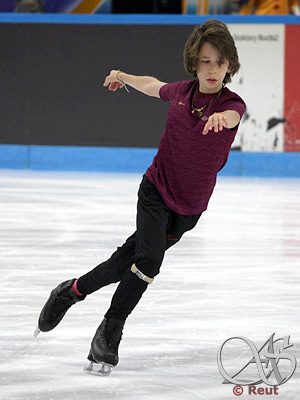 Talking about 2023/24 season, theirs was a challenging one as Nikita dealt with a back injury, and Kirill faced an acute case of Osgood-Schlatter disease - a condition unfortunately common among young athletes in sports involving jumping and running, making it all too familiar in figure skating. The turning point came at the Bavarian Open 2024. Nikita earned bronze in juniors, while Kirill triumphed in the advanced novice category. Nikita, however, wasn't entirely satisfied with his performance: "Even though I finished on the podium, my skating wasn't great. It was probably my worst competition of the season. But Kirill did amazing there; he won." Both brothers have fond memories of picturesque Oberstdorf, where they are set to return in January for the Bavarian Open 2025.
Talking about 2023/24 season, theirs was a challenging one as Nikita dealt with a back injury, and Kirill faced an acute case of Osgood-Schlatter disease - a condition unfortunately common among young athletes in sports involving jumping and running, making it all too familiar in figure skating. The turning point came at the Bavarian Open 2024. Nikita earned bronze in juniors, while Kirill triumphed in the advanced novice category. Nikita, however, wasn't entirely satisfied with his performance: "Even though I finished on the podium, my skating wasn't great. It was probably my worst competition of the season. But Kirill did amazing there; he won." Both brothers have fond memories of picturesque Oberstdorf, where they are set to return in January for the Bavarian Open 2025.
The 2024/25 season has been eventful for both Nikita and Kirill. Nikita competed in two Junior Grand Prix events, finishing fifth in Riga and fourth in Ljubljana. He went on to claim victories at both the Crystal Skate 2024 and the Santa Claus Cup 2024.
Kirill, who has transitioned to juniors this season, has had an impressive start. He placed in the top 10 at the Junior Grand Prix in Bangkok, took fourth at both the Trophy Metropole Nice C├┤te d'Azur 2024 and the Santa Claus Cup 2024, and earned a silver medal at the Crystal Skate 2024.
This week, they are both competing at Nationals. And the decision on who will claim Israel's sole berth for the Junior World Championships - between the Sheiko brothers and Tamir Kuperman - will hinge on the combined results of the Santa Claus Cup 2024 and the upcoming Bavarian Open.
With their packed schedule of early morning practice, school, more training after school, and travel for competitions, they still manage to find moments for their hobbies - and, of course, for going to the sea. "I adore the sea," Nikita shares. "I'm really glad we live here. We both have SUPs (stand-up paddleboards), 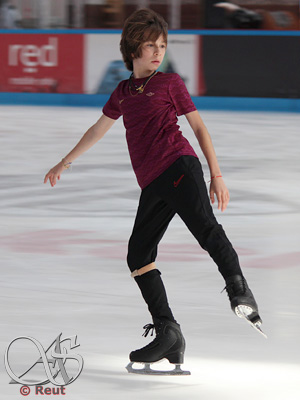 and we usually take them out to the furthest buoys, tie them up, and then swim to the coral reefs. We typically go very early. Since we're used to waking up at four in the morning on regular days, even on our day off, we don't sleep in much. By six-thirty, we're already at the sea, and it's so calm - like a mirror. That's the best time to swim!" Nikita is also an avid scuba diver, having already gone diving 16-17 times, some of them at the Dolphin Reef, a unique attraction that offers encounters with dolphins in their natural environment.
and we usually take them out to the furthest buoys, tie them up, and then swim to the coral reefs. We typically go very early. Since we're used to waking up at four in the morning on regular days, even on our day off, we don't sleep in much. By six-thirty, we're already at the sea, and it's so calm - like a mirror. That's the best time to swim!" Nikita is also an avid scuba diver, having already gone diving 16-17 times, some of them at the Dolphin Reef, a unique attraction that offers encounters with dolphins in their natural environment.
Kirill lists football and sea sports among his hobbies and mentions his love for computer games that combine action and strategy.
Nikita has a more unique hobby: drone photography. "From a very young age, I was fascinated by everything related to aviation - airplanes, helicopters," he explains. "Drones combine that passion with the possibilities of photography. I even have a separate Instagram account for my drone photography, dronepilot.nik. I started with a smaller drone and used it extensively. Once I realised how much I enjoyed it, I saved up and bought a high-quality drone with my own money from working at our rink. I've taken many photos here at home, at the Dead Sea, and even during my travels. I now have over 250 hours of 'flight time.' I also hold a special permit (a recreational drone license which requires demonstrating professional aviation knowledge and passing a safety test -ed). With this license, I can legally fly in restricted areas, such as near airports."
One of the most fascinating aspects of being a fan of figure skating is getting to watch skaters grow and develop over time. Following the journey of Nikita and Kirill from their very young age has been both a pleasure and a privilege. We look forward to seeing where their path takes them and to more conversations with them in the future.




















































